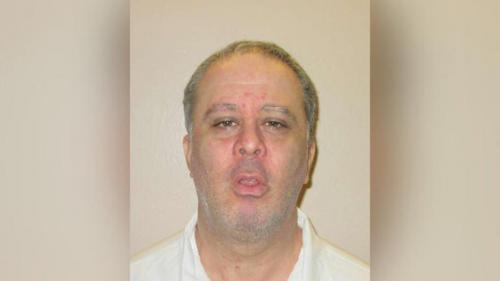28 August 2025 :
August 22, 2025 - Alabama. New trial for Christopher Barbour
U.S. District Judge Emily Marks grants new trial for death row inmate Christopher Barbour whose DNA did not match.
He remains on death row as Alabama ‘downplays’ DNA that points to someone else.
After recent DNA testing raised questions, a Montgomery man who Alabama has kept on a death row for 31 years will get another shot at justice. A federal judge has ordered a new trial in the 1992 murder case that landed Christopher Barbour in prison.
The ruling comes as Alabama prosecutors have pushed to explain away the DNA found on the victim, which points to someone already in an Alabama prison for an unrelated rape and murder.
Barbour, 55, was convicted more than 3 decades ago of the brutal slaying of Thelma Roberts, a single mother of 2, when he was a homeless teenager living behind the mall in Montgomery. He confessed to the crime initially, although he said he was beaten by Montgomery police, and immediately tried to take back the confession. He has maintained his innocence in the more than 3 decades since.
In 2023, new testing revealed that evidence left on Roberts’ body wasn’t Barbour’s DNA, nor that of the 2 friends also implicated in the crime. Instead, the new testing shows that the only DNA at the scene of the murder and rape was that of a young neighbor, Jerry Tyrone Jackson.
Faced with the new evidence, Alabama Attorney General Steve Marshall argued that the victim must have had sex with the neighboring teenager before being raped and murdered by a group of homeless men from across town who did not leave any physical evidence.
That did not sway a federal judge.
In an order over 150 pages, U.S. District Judge Emily Marks ruled on August 22 that Barbour must receive a new trial. “The fundamental problem with the state’s position is that DNA was left behind,” wrote Marks.
Jackson, the neighbor, was a teenager at the time of the murder and was close with the Roberts family. He’s currently serving time in another Alabama prison for a separate murder, which happened several years after Roberts’ death. In that case, records show he stabbed and beat a north Alabama woman after she denied his sexual advances.
The DNA from Jackson “is powerful evidence that Barbour’s confession is false,” Marks wrote in an order from last year, “and that Mrs. Roberts’ murder did not occur as the prosecution presented it at trial.”
The Alabama Attorney General’s Office, who has been prosecuting the case, has 90 days to begin a new trial for Barbour.
The state’s top prosecutors did not respond to a request for comment.
In the spring of 1992, Roberts lived in Montgomery’s Chisholm neighborhood with her 2 teenage children. The 40-year-old was married, but she and her husband were separated. She went to church often, didn’t drink or smoke, and wasn’t dating, according to her family. She worked as a housekeeper at the hospital on Maxwell Air Force Base.
On March 20, 1992, Roberts’ two children met up with some friends after school, including their neighbor, Jackson. Jackson was 16 at the time, and the Roberts kids were 16 and 17.
The teens went to a neighbor’s house down the street, and both spent the night. According to court records, Jackson was at the house off and on throughout the night: First, he exposed himself to a 13-year-old girl. He left the party at some point, but returned later and acted strangely, partygoers testified.
The next morning, the Roberts teens walked back to their house, where they found their mother dead on the bedroom floor.
An autopsy report revealed Roberts had been stabbed nine times, beaten, strangled and raped. A butcher knife from the kitchen was left protruding from her chest, and there was a plastic bag over her head. She had been partially burned, and several small fires had been started throughout the home.
After police ruled out the slain woman’s husband and son, they changed course and looked into a group of neighborhood teenagers. Jackson was never interviewed.
Eventually, they focused on Barbour and another man named Christopher Hester.
Barbour was 22, homeless and taking shelter behind Montgomery’s Eastdale Mall. He was struggling with the death of his mother and, despite a brief stay with his grandparents, Barbour wound up on the streets. He and his friends caught the attention of police as people of interest in a string of grocery store fires — police thought they may have been involved in a group that set small fires in supermarket aisles as a distraction to steal food. The murderer had also attempted to set fire to Roberts’ body.
Investigators from the Montgomery police and fire departments talked to Barbour several times. They first found him at the mall’s food court, before taking him to police headquarters.
“We questioned him intently,” the lead detective at the time wrote in police notes. “He is a whimpie little thing, and scares real easy.”
The detective continued, “We did not get anything concrete from this individual… he denies emphatically.”
Police visited Barbour again in his campsite behind the mall, and on May 1 of that year administered a polygraph test.
“According to Barbour, the officers were verbally and physically abusive at times,” the judge wrote in her 2024 order, “and (the detective) repeatedly slapped Barbour in the face when he did not know the answers….”
That evening, Barbour was fed dinner at the local fire station and allowed to sit on a fire truck. That night, he gave three confessions. None were in the presence of an attorney. Of the three, one was audiotaped and one was videotaped. One was not recorded at all.
According to court records, the FBI was, at the time, investigating Montgomery police for “using physical abuse to induce confessions.” Records do not reflect how that investigation ended.
After the confessions, Barbour was arrested and charged with murder.
He implicated 2 other men in his tale, Hester and a juvenile boy who was never prosecuted. According to police at the time, Barbour said Hester raped Roberts, while he and the boy held Roberts down. Barbour said after the rape, he stabbed the 40-year-old.
Marks used dozens of pages in her Friday ruling to cite case law on the various claims Barbour presented in his lawsuit, which has been going on for more than 20 years.
She ordered the new trial in response to his claims about the original prosecutors in Montgomery County using false information during his trial and withholding evidence from his original defense team.
Barbour’s current lawyers argue that Montgomery prosecutors knew the DNA found on the victim didn’t match either Barbour or Hester, which would prove his confession was false.
“The relevant questions are whether Barbour’s statement that Hester raped Mrs. Roberts was false, and whether the prosecutor knew the statement was false. The answer to both questions is yes,” the judge wrote.
The Alabama Attorney General’s office doesn’t dispute the new DNA results. But prosecutors argue it doesn’t necessarily exonerate Barbour, either.
They argue that just because Jackson had sex with Roberts doesn’t mean she couldn’t have been raped by a different man later.
The state’s latest theory — though they write that it’s not their responsibility to offer one — is laid out in court records. The state said a “likely theory” is that the single mother also had sex with Jackson that same day. That was just before being raped and killed by a group of homeless men who she invited into her house hours later.
Marks said in her 2024 order and her latest one that the state’s theory “defied logic and common sense.
“Applying Occam’s Razor, the physical evidence, DNA test results, expert testimony, and common sense would cause reasonable jurors to doubt the veracity of the State’s theory,” the judge wrote previously. The DNA is “objective, reliable, and undisputed.”
“And unlike people, ‘DNA doesn’t lie.’”
The state also said it’s also possible that Barbour and Jackson worked together.
There’s no evidence the 2 ever met.
“It is puzzling that in this case, the State downplays the significance of the new DNA evidence when the State otherwise relies on similar DNA evidence to secure convictions and clear cold cases,” Marks wrote last year.
As for Barbour’s claims about his false confession, Marks said in her latest order that state courts long ago ruled that it was usable in court and she did not have the power to overturn that ruling.
“The Court does not take lightly Barbour’s allegations of serious verbal and physical abuse by law enforcement,” she wrote on Friday. “Yet, Supreme Court precedent prevents this Court from overturning a state court’s decision merely because it finds that the decision was incorrect or because it would have reached a different conclusion.”
She also ruled his lawyers at the time of his 1993 trial were not ineffective.






